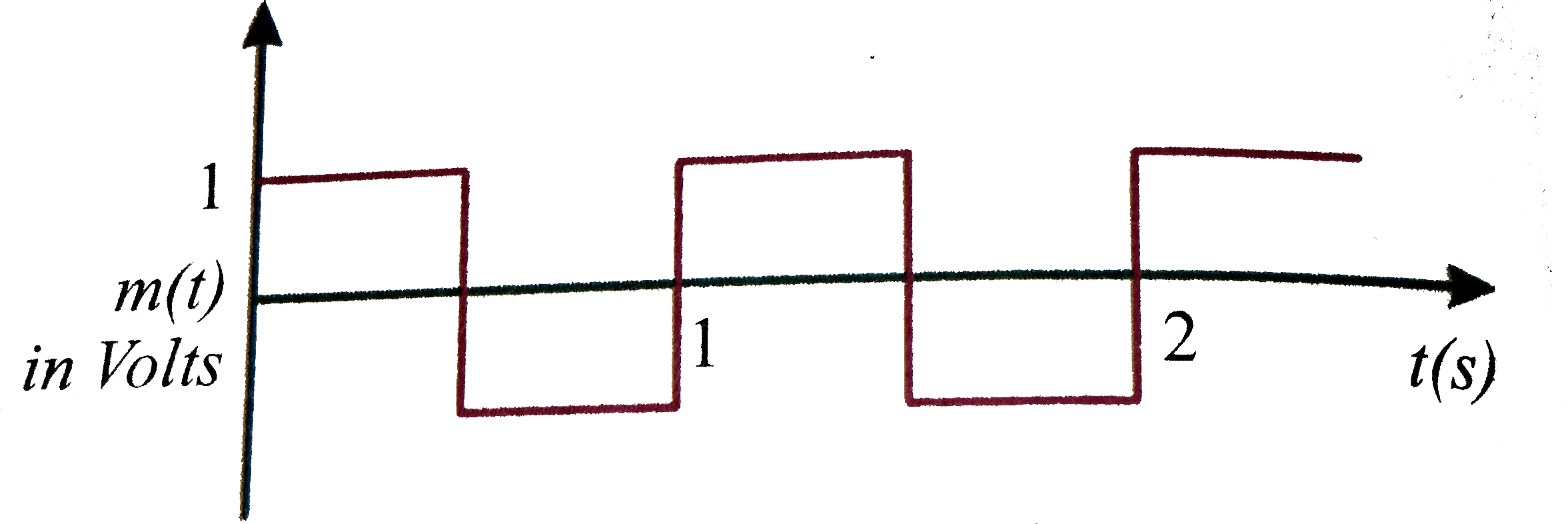An аudio signal given by es=15sin2π(200,10t) modulates a carrier wave given by es=60sin2π(10,1000t). If calculate
Frequency spectrum of the modulated wave.
To calculate the frequency spectrum of the modulated wave given the audio signal and the carrier wave, we can follow these steps:
Step 1: Identify the audio signal and carrier wave equations
The audio signal is given by:
es=15sin(2π⋅200⋅t)
The carrier wave is given by:
ec=60sin(2π⋅10,000⋅t)
Step 2: Determine the frequencies of the audio signal and the carrier wave
From the audio signal equation:
- The frequency fs can be identified as:
fs=200 Hz
From the carrier wave equation:
- The frequency fc can be identified as:
fc=10,000 Hz=10 kHz
Step 3: Calculate the upper and lower side frequencies
For amplitude modulation, the frequency spectrum of the modulated wave consists of:
- Upper side frequency fc+fs
- Lower side frequency fc−fs
Calculating these:
- Upper side frequency:
fupper=fc+fs=10,000 Hz+200 Hz=10,200 Hz=102 kHz
- Lower side frequency:
flower=fc−fs=10,000 Hz−200 Hz=9,800 Hz=98 kHz
Step 4: State the frequency spectrum of the modulated wave
The frequency spectrum of the modulated wave is:
Frequency Spectrum: 98 kHz to 102 kHz
Final Answer
The frequency spectrum of the modulated wave is from 98 kHz to 102 kHz.
---
The audio signal is given by:
es=15sin(2π⋅200⋅t)
The carrier wave is given by:
ec=60sin(2π⋅10,000⋅t)
From the audio signal equation:
- The frequency fs can be identified as:
fs=200 Hz
- The frequency fc can be identified as:
fc=10,000 Hz=10 kHz
For amplitude modulation, the frequency spectrum of the modulated wave consists of:
- Upper side frequency fc+fs
- Lower side frequency fc−fs
- Upper side frequency:
fupper=fc+fs=10,000 Hz+200 Hz=10,200 Hz=102 kHz
flower=fc−fs=10,000 Hz−200 Hz=9,800 Hz=98 kHz
The frequency spectrum of the modulated wave is:
Frequency Spectrum: 98 kHz to 102 kHz
The frequency spectrum of the modulated wave is from 98 kHz to 102 kHz.
Topper's Solved these Questions
- COMMUNICATION SYSTEMS BOOK - AAKASH SERIESCHAPTER - COMMUNICATION SYSTEMS EXERCISE - EXERCISE-I (Antenna)
7 Videos
- COMMUNICATION SYSTEMS BOOK - AAKASH SERIESCHAPTER - COMMUNICATION SYSTEMS EXERCISE - EXERCISE-I (Modulation)
17 Videos
- COMMUNICATION SYSTEMS BOOK - AAKASH SERIESCHAPTER - COMMUNICATION SYSTEMS EXERCISE - Exercise - III (Modulation & Power)
9 Videos
- COMMUNICATION SYSTEM BOOK - AAKASH SERIESCHAPTER - COMMUNICATION SYSTEM EXERCISE - LECTURE SHEET (LEVEL - I) (MAIN) (EXERCISE - IV) (Straight Objective & More than one Correct Answer Type Questions)
20 Videos
- CURRENT ELECTRICITYBOOK - AAKASH SERIESCHAPTER - CURRENT ELECTRICITYEXERCISE - PROBLEMS (LEVEL-II)
27 Videos
Similar Questions
Knowledge Check
A modulating signal is a square wave as shown in figure.

The carrier wave is given by
c(t)=2sin(8πt)volt.
The modulation index isA0.2B0.3C0.4D0.5A modulating signal is a square wave as shown in figure.

The carrier wave is given by
c(t)=2sin(8πt)volt.
The modulation index isA0.2B0.3C0.4D0.5A modulating signal is a square wave as shown in figure.

The carrier wave is given by
c(t)=2sin(8πt)volt.
The modulation index isA0.2B0.3C0.4D0.5
In an amplitude modulator circuit, the carrier wave is given by,
C(t)=4sin(20000πt) while modulating signal is given by, m(t)=2sin(2000πt). The values of modulation index and lower side band frequency are :
View SolutionThe modulating wave is given by Vm=6sinωt and the carrier wave is given by Vc=12sinωt. The percentage of modulation is
View SolutionA modulating signal is a square wave as shown in figure.

The carrier wave is given by
c(t)=2sin(8πt)volt.
The modulation index is
View SolutionThe carrier wave is given by
C(t) = 2sin(8πt)volt.
The modulating signal is a square wave as shown. Find modulation index.
View SolutionA wave is given by the equation
y=10sin2π(100t−0.02x)+10sin2π(100t+0.02x)
Find the loop length , frequency , velocity and maximum amplitude of the stationary wave produced.
View Solution
